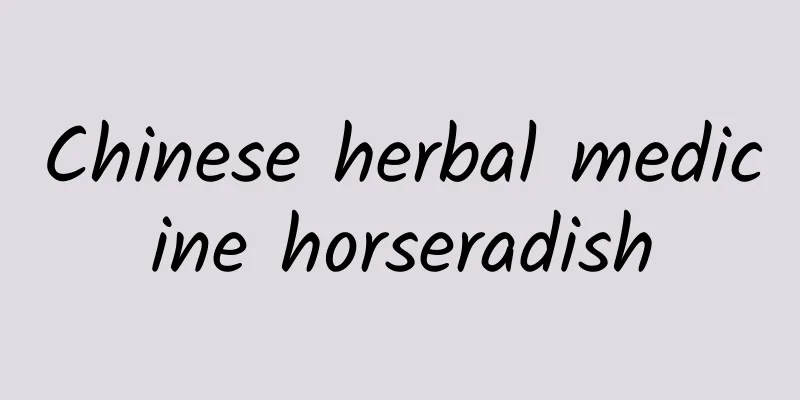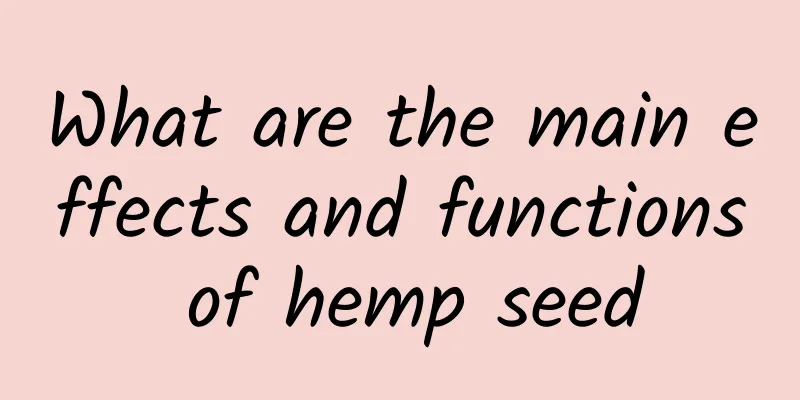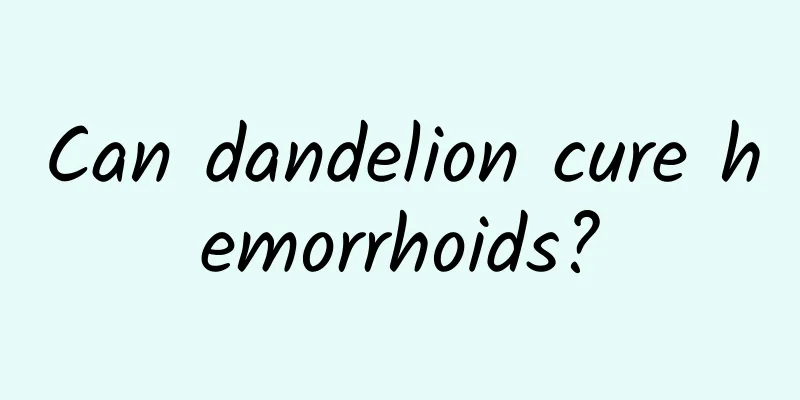Chinese herbal medicine horseradish

|
Traditional Chinese medicine, the essence accumulated by China's ancestors for more than 5,000 years, is also a magical existence. An inconspicuous flower or plant in the woods, in the mountains, or beside the paths may be the medicine that can relieve your pain. All living things in the world carry a mysterious shadow, but there is always a reason for their existence. It is the wonderful creation of nature. When one thing appears, another thing must also exist, allowing you to experience the wonders of the world and the amazing creation of nature. "Compendium of Materia Medica", a Chinese medical classic, brings together the medicinal effects of Chinese medicinal materials. This treasure book carries the wisdom and historical creation of the Chinese people, and records the magical effects of medicines. Regarding horseradish, let's learn about the records about it. Horseradish, a small deciduous shrub, 20-30cm tall. The rhizome is horizontal and yellowish white. The stem has several branches and the branches are soft. The stem bark is gray-brown or gray-white and wrinkled. Simple leaves, alternate; with short petioles; leaf blades obovate-lanceolate, entire, covered with short hairs on the upper side, and cuneate at the base. The flowers are bisexual, pale yellowish white, and usually 4 in axillary; the perianth is short tubular, with 4 lobes at the apex, and the lobes are oval; there are 8 stamens in 2 whorls, each inserted in the middle of the perianth tube; the disk is annular; and the ovary is glabrous. The fruit is green when young and bright red or red when ripe. The flowering period is April-May, and the fruiting period is June-September. It grows in mixed coniferous and broad-leaved forests and under and on the edge of coniferous forests at an altitude of 550-1800m. The chemical component of horseradish is daphneidin, which has sedative and analgesic effects. Small doses can make animals quiet and reduce their activities; large doses can make animals sleep and anesthetized. Daphneidin used in combination with sodium pentobarbital and chloral hydrate can make awake animals fall into deep sleep, dilate coronary arteries, increase coronary flow, improve myocardial metabolism, and reduce oxygen consumption. Daphnetin also has the effects of anti-coagulation, lowering blood lipids and stimulating the pituitary-adrenal cortex system and anti-inflammatory. Traditional Chinese medicine carries China's historical achievements and has left a magnificent and beautiful mark in China's long history books. It survives the passage of time and is filled with hope and pride. This magnificent page is still waiting for us to inherit and innovate. In the wheel of history, it will move forward, develop, and survive forever. |
>>: The efficacy and function of the traditional Chinese medicine Fritillaria cirrhosa
Recommend
These 3 "face washing mistakes" are quietly ruining your face! Doctors suggest: The correct way to wash your face →
November 7th of each year is World Beauty Day, wh...
The efficacy and function of silver old plum
Silver plum is a very good medicinal material. It...
Is Poria good for treating hair loss?
Recently, many of us often suffer from hair loss ...
The medicine Hua Tuo prescribed for Cao Cao is really amazing
During the Three Kingdoms period, it was said tha...
The efficacy and function of coconut root
Coconut root is something that many people are ve...
Is Chinese medicine effective in treating schizophrenia?
Schizophrenia can be said to be a very serious me...
The more you walk, the lower your risk of death?
Insufficient physical activity affects more than ...
The efficacy and function of apple
Most Chinese medicinal materials have good effect...
The efficacy and function of cat's ear grass
Many people are not very clear about the effects ...
The efficacy and function of Bi Bo
No one has heard of Bi Bo. It is usually eaten ra...
The efficacy and function of Luanhua
Traditional Chinese medicine often has unexpected...
The efficacy and function of red elm
Chinese medicine has different effects on our bod...
“I am Shuguang” and “Shuguang understands” shocked the entire Internet. Who is “Shuguang”?
August 20, 14:33 After about 6 hours of extravehi...
What is a flying wing layout? Why does the sixth-generation aircraft use an "old" design from decades ago?
The flying wing layout, as the name implies, is a...
Eel fish paste effect and function
Friends who don’t know eel fish paste will not un...









